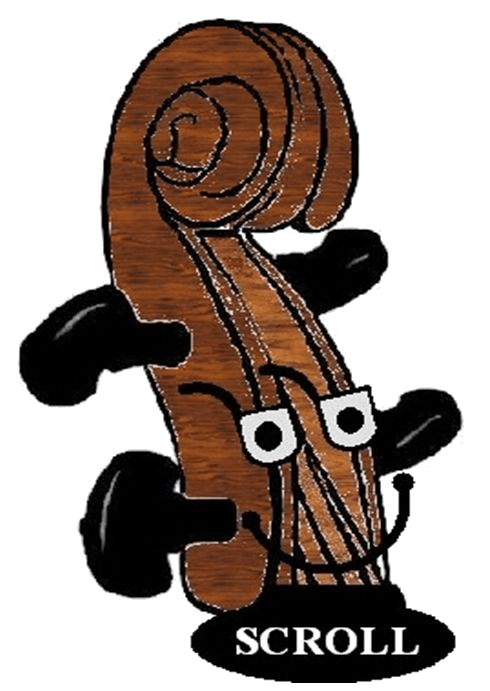
Rapid Up-Bow and Down-Bow Staccato
Excellent pronation, ARC! As mentioned earlier, there are many strong opinions about the performance and terminology of bowing techniques. Scroll has kindly offered to share his knowledge with everyone.

Flying-Staccato is one of the most debated virtuosic bow strokes.
“Flying” Staccato

By analyzing and trying to determine how Heifetz accomplished such mastery, some string players have nicknamed the “Flying-Staccato” the “Stiff-Arm-Staccato.” Earlier on in his career, it appeared that Heifetz tensed his arm in order to create the dazzling effect. Years later, after gaining more experience, his approach seemed to change. Heifetz increased the ease of his performance of this technically dazzling feat, by employing a greater use of more fluid motions.
A Virtuoso is someone who possesses exceptional technical mastery. Virtuosic bow strokes require experimentation and detailed practice. The goal is to find the most natural and logical way to accomplish highly specific bowing challenges.
The most interesting use of rapid Up-bow and Down-bow staccato is the infamous “Hora Staccato” composed by Grigoras Dinicu. Although the composer himself performed the rapid passages with normal back and forth alternating bow directions, world-renowned Jascha Heifetz, considered to be one of the finest violin virtuosos of all time, performed all of the rapid sixteenth-note passages in the same bow direction, with amazingly controlled, rhythmically precise, articulate staccato.
Experience brought about greater command of applying Weight in Motion. Virtuosos achieve complete control of all string playing technical challenges. Although understanding why this virtuosic bow stoke may have received its label, the idea of needing to create stiffness by tensing any muscle in order to perform, is in direct conflict with each and every concept that you have been learning while progressing in the Quest.
Play strong and always stay relaxed!
No matter what one wishes to call this virtuosic bow stroke, the idea is to be able to manage the bow in such a fashion so as to perform rapid and clear staccato notes in one bow direction. V has returned to add more insights.

Introducing the Bow Parts of the Bow The Stick Horse-Hair The Tip The Frog The Winding How the Bow Works
Rosin Preparing to Hold the Bow Stick Training Exercises Bowing Terminology Down-Bow Up-Bow
Bow-Hand Set-Up Finger Tasks and Functions The Thumb Meet ARC Finger Segments The Index-Finger
Bow-Hand Pronation The Center-Finger and Ring-Finger Bow-Hand Fulcrum Ring-Finger Propulsion Bass Bows
Pinky Bow-Tasks ‘Casting’ the Bow-Hand Bow-Wrist Tasks Rotational Inertia Arco Clay Smile Exercise Meet ANGLE
The Bow-Arm Box The Shoulder Arc Bow Contact-Point String Lanes Bow-Segment Mastery Bowing Exercises
Finding the Bow Contact-Point “Painting With Sound” Bowing Exercises Menu Bow Taps Bowing Traditions
Perform Down-Bows Perform Up-Bows The Art of the Bow-Change Articulations Staccato Legato
Mastery Checkpoint One Building Bow Control Bow Speed and Bow-Arm Motion Bow Planning and Distribution
Slow Moving Bow Strokes Individual Bow Segments Traveling the Bow Bowing Dynamics Mastery Checkpoint Two
Advanced Techniques Slurs and Articulations Slur Training Locating the Bow’s Balance Point Ricochet and Spiccato
Exploring Ricochet Ricochet Control Spiccato Training Spiccato Control Spiccato Brush Strokes
Multiple String Crossings Virtuosic Bow Strokes Arpeggio Bowing “Flying” Staccato Mastery Checkpoint Three
SCROLL’s List of Bow Strokes
Rosin Preparing to Hold the Bow Stick Training Exercises Bowing Terminology Down-Bow Up-Bow
Bow-Hand Set-Up Finger Tasks and Functions The Thumb Meet ARC Finger Segments The Index-Finger
Bow-Hand Pronation The Center-Finger and Ring-Finger Bow-Hand Fulcrum Ring-Finger Propulsion Bass Bows
Pinky Bow-Tasks ‘Casting’ the Bow-Hand Bow-Wrist Tasks Rotational Inertia Arco Clay Smile Exercise Meet ANGLE
The Bow-Arm Box The Shoulder Arc Bow Contact-Point String Lanes Bow-Segment Mastery Bowing Exercises
Finding the Bow Contact-Point “Painting With Sound” Bowing Exercises Menu Bow Taps Bowing Traditions
Perform Down-Bows Perform Up-Bows The Art of the Bow-Change Articulations Staccato Legato
Mastery Checkpoint One Building Bow Control Bow Speed and Bow-Arm Motion Bow Planning and Distribution
Slow Moving Bow Strokes Individual Bow Segments Traveling the Bow Bowing Dynamics Mastery Checkpoint Two
Advanced Techniques Slurs and Articulations Slur Training Locating the Bow’s Balance Point Ricochet and Spiccato
Exploring Ricochet Ricochet Control Spiccato Training Spiccato Control Spiccato Brush Strokes
Multiple String Crossings Virtuosic Bow Strokes Arpeggio Bowing “Flying” Staccato Mastery Checkpoint Three
SCROLL’s List of Bow Strokes





